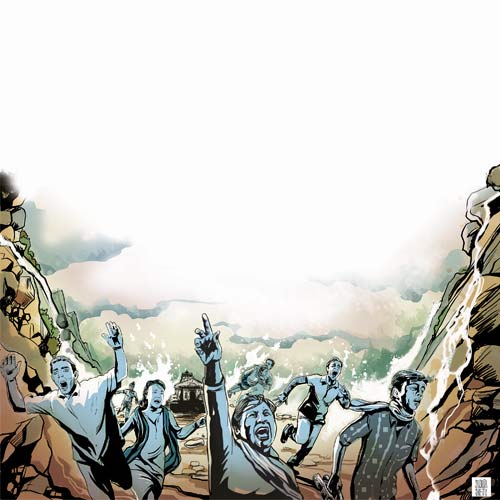Kedarnath Disaster: How it could have been averted

The colossal tragedy could perhaps have been averted if the government had regulated the number of pilgrims visiting the region and cracked down on haphazard construction built to accommodate the growing hordes.
The government had a template to regulate tourism in the form of a report by the Nitish Sengupta panel constituted after floods and landslides killed 243 Amarnath Yatra pilgrims in 1996.
There are many similarities between the Char Dham and Amaranth Yatra; the shrines are at similar altitudes and with similar geographical hazards.
One of the Sengupta report’s most important recommendations was to limit pilgrims from the starting points to a maximum of 3,500 people a day, with a cap of 20,000 people on any given day on the stretch between Chandanwari and Amarnath. Similarly, in the case of the Char Dham Yatra, the government should restrict the total number of pilgrims per season or the number of pilgrims present at the last point accessible by vehicle. In the case of Kedarnath, it is Gaurikund.
The trek to Gangotri and Gomukh is somewhat better regulated with the government restricting visitors to only 150 (including porters) a day.
The panel also prescribed a ban on pilgrims below the age of 15 years and above the age of 65, after noting that most of the dead were from these age groups. It also recommended the constitution of a Shrine Board under the chairmanship of the state governor to ensure the yatra was conducted in an orderly fashion, with facilities for pilgrims with the least damage to the local ecology.
The one difference in the Amarnath and Char Dham yatras is the numbers involved. While the Amarnath Yatra is open for around 45 days (53 days this season), the pilgrimage to Kedarnath and Badrinath is open for nearly six months. While the Amarnath Shrine Board checks the flow of tourists, there are no checks on movement of pilgrims to Kedarnath-Badrinath. As a result, you know the numbers that went on the Amarnath Yatra last year (6.15 lakh) but the only estimates for Kedarnath-Badrinath are vague figures from 2006 (5lakh to 8 lakh).
In Amarnath, there is a statutory prohibition on building permanent structures.
Even semi-permanent ones like tents are removed after the yatra ends. But in Uttarakhand, hundreds of permanent structures — lodges, restaurants and shops — have mushroomed in complete violation of environmental norms. Nor are there any age restrictions for the Char Dham Yatra, that’s believed to be one of the more strenuous pilgrimages.
A panel on the lines of the Sengupta committee is sorely needed to lay down guidelines to regulate tourism and check illegal construction in Uttarakhand.
But that may not be enough. Despite agreeing to implement the Sengupta reccommendations, the J&K administration has failed to regulate pilgrim traffic on the Amarnath Yatra. It has disregarded the committee’s cap of a maximum of 1.25 lakh pilgrims during the entire yatra: this season, which begins on June 28, it is expected to cross 7 lakh.







